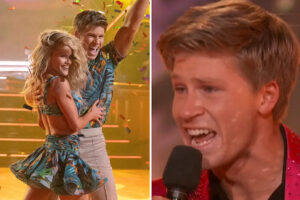
URGENT UPDATE: A remarkable discovery has just been made on the doorstep of environmental scientists in Perth, Australia. The elusive Teyl luculentus, commonly known as the citrine trapdoor spider, has been spotted for the first time in 30 years, right outside the University of Western Australia’s Shenton Park field station.
Dr. Leanda Mason and Professor Kingsley Dixon, both leading researchers in the field of environmental science, unearthed this rare arachnid in remnant scrub near their laboratory. “For almost 50 years I have worked in this bushland, and who would have thought such an extraordinary discovery would happen right on our doorstep,” Professor Dixon exclaimed. “This is a rare triumph of nature holding on to life.”
The shiny, gem-like appearance of the citrine trapdoor spider, with its vibrant orange and yellow hues, has captivated the scientific community. Previously categorized in the Teyl genus by UWA zoologist Barbara York Main in 1975, the creature vanished from sight approximately 30 years ago as urban development encroached on its natural habitat in the Swan Coastal Plain.
Dr. Mason, a research fellow at Edith Cowan University, highlighted the significance of the name “Teyl,” which derives from Noongar languages and translates to “shiny stone,” reflecting the spider’s lustrous exterior. This rediscovery not only marks a significant milestone in arachnid research but also raises awareness about the importance of preserving natural habitats in urban settings.
The implications of this discovery are profound. With urban sprawl threatening native wildlife, the return of the Teyl luculentus serves as a beacon of hope for conservation efforts. It underscores the need for continued research and protection of Australia’s unique ecosystems.
Moving forward, scientists will monitor this finding closely, hoping to learn more about the citrine trapdoor spider’s habits and habitat needs. Authorities encourage local residents and conservationists to remain vigilant in preserving the biodiversity that still exists in urban environments.
This unprecedented sighting is already sparking conversations among wildlife enthusiasts and researchers alike. As news spreads, many are eager to share this inspiring story of resilience in nature.
Stay tuned for more updates as researchers continue to investigate the significance of this extraordinary find.






